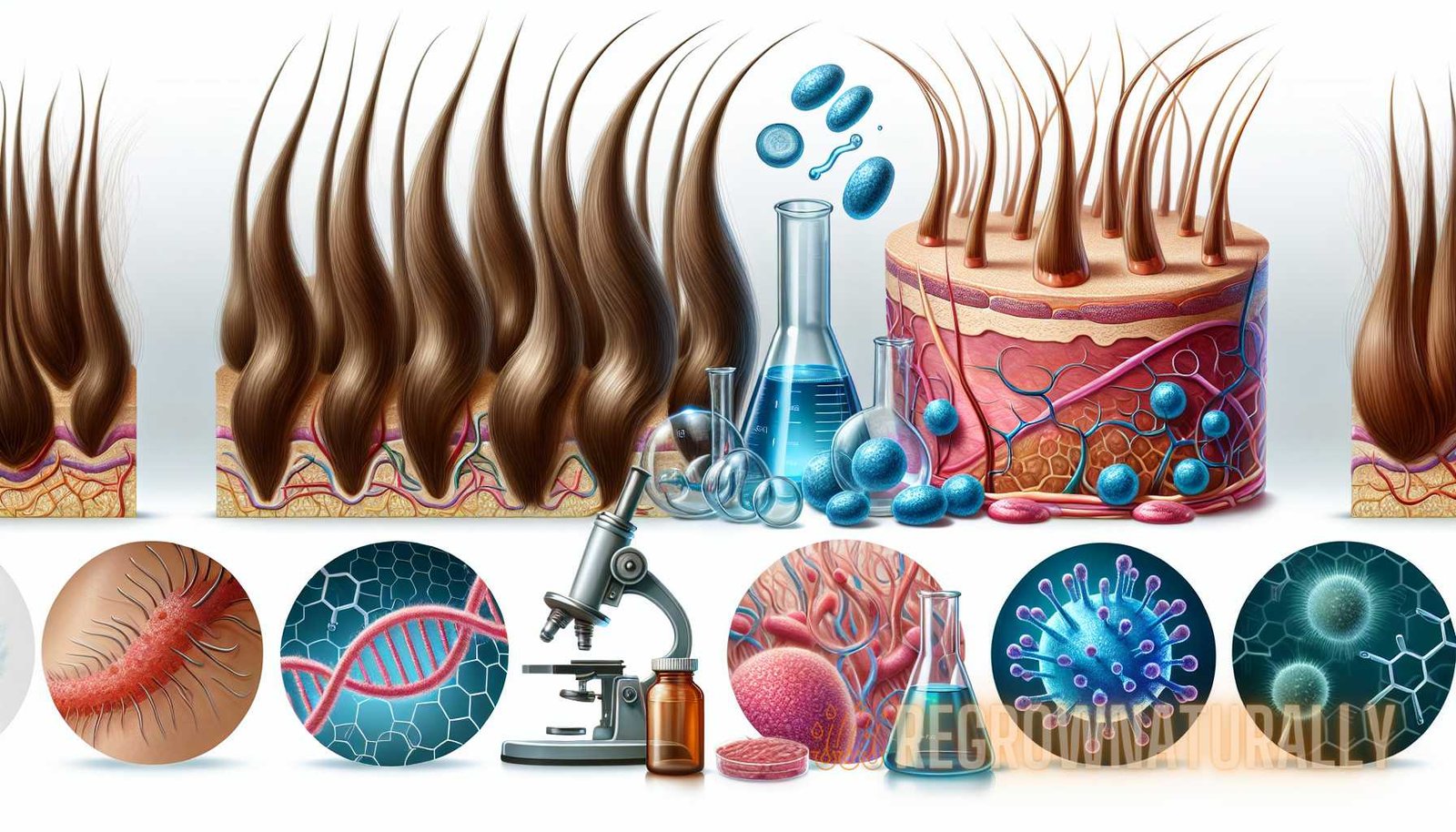Unveiling the Science of Hair Growth: Uncovering the Surprising Path to Extraordinary Transformation
Introduction
Hair transformation is a topic that has fascinated scientists and researchers for decades. The process of hair growth, which occurs naturally in most individuals, has often been a subject of study in order to understand the factors that influence it and how it can be manipulated to achieve transformative results. In this article, we will delve into the science behind hair growth, exploring the surprising path to extraordinary hair transformation.
The Basics of Hair Growth
Before we dive deep into the science behind hair growth, it is important to understand the basics. Human hair growth occurs in cycles, comprising three distinct phases: anagen, catagen, and telogen. Let’s discuss each phase in detail:
Anagen Phase
The anagen phase is the active growth phase of hair follicles. During this phase, the cells in the hair bulb divide rapidly, pushing the hair shaft upward and causing it to grow. This phase can last anywhere from two to seven years and determines the length and thickness of the hair. Each hair follicle undergoes its own independent growth cycle.
Catagen Phase
The catagen phase, also known as the transitional phase, follows the anagen phase. During this short phase, the hair follicle shrinks, detaches from the dermal papilla, and stops producing melanin. This phase typically lasts for two to three weeks.
Telogen Phase
The telogen phase is the resting phase of hair growth. In this phase, the hair follicle is no longer actively growing, and the hair strand remains attached to the scalp. The follicle rests for about three months before reentering the anagen phase and starting a new growth cycle. Around 10 to 15 percent of the hair on your scalp is in the telogen phase at any given time.
The Science Behind Hair Growth
Now that we have a basic understanding of the hair growth cycle, let’s explore the science behind it. Hair growth is regulated by a complex interplay of genetic, hormonal, and environmental factors. Here are some key scientific insights into the process:
Genetic Factors
Genes play a significant role in determining hair growth patterns. Genetic variations can influence the width, color, texture, and even the rate of hair growth. Studies have identified several genes associated with hair growth, including those involved in hair follicle development, regulation of hair growth cycle, and pigmentation. Understanding the specific genetic factors that contribute to hair growth can potentially lead to targeted interventions for hair transformation.

Hormonal Factors
Hormones also play a critical role in hair growth. Androgens, a group of male sex hormones, including testosterone and dihydrotestosterone (DHT), have been implicated in both the promotion and inhibition of hair growth. Testosterone, for example, stimulates the growth of facial and body hair, while DHT, a derivative of testosterone, can shrink hair follicles, leading to hair loss. Hormonal imbalances can disrupt the hair growth cycle and result in hair thinning and baldness.
Environmental Factors
While genetics and hormones are key players in hair growth, environmental factors can also impact the process. Poor nutrition, stress, smoking, and exposure to certain chemicals and pollutants can affect the health of hair follicles and impede growth. Conversely, a healthy diet, proper hair care practices, and a stress-free lifestyle can promote optimal hair growth.
Revolutionary Techniques for Hair Transformation
Over the years, numerous techniques and treatments have been developed to enhance hair growth and achieve transformative results. Let’s explore some of the most revolutionary techniques:
Hair Transplantation
Hair transplantation is a surgical technique that involves moving hair follicles from one part of the body, typically the back of the scalp, to the balding or thinning areas. The transplanted follicles continue to grow hair in their new location, resulting in improved density and coverage. This technique has advanced significantly in recent years, with refined methods such as Follicular Unit Extraction (FUE) and Direct Hair Implantation (DHI) providing more natural-looking results.
Platelet-Rich Plasma Therapy
Platelet-rich plasma (PRP) therapy is a non-surgical procedure that utilizes the healing properties of blood platelets to promote hair growth. During this treatment, a small amount of blood is drawn from the patient and then processed to separate the platelet-rich plasma. The resulting PRP is injected into the scalp, where it stimulates the hair follicles and triggers natural hair growth. PRP therapy has gained popularity due to its minimally invasive nature and promising results.
Hair Nutrition
Nutrition plays a vital role in maintaining healthy hair and promoting optimal growth. A well-balanced diet rich in vitamins, minerals, and proteins is essential for strong and vibrant hair. Nutritional deficiencies can lead to hair loss and thinning. According to a recent article available at https://regrownaturally.fun/success-stories/hair-nutrition-3/, incorporating hair-boosting foods such as nuts, seeds, fatty fish, leafy greens, and eggs into your diet can nourish your hair follicles and support hair growth.
Conclusion
Unveiling the science of hair growth and the transformative path to extraordinary results requires a multidimensional approach encompassing genetics, hormones, and environmental factors. By understanding the intricate mechanisms behind hair growth and exploring revolutionary techniques, such as hair transplantation and PRP therapy, individuals can achieve the hair transformation they desire. To explore more about the science behind hair restoration and transformative success, check out the article available at https://regrownaturally.fun/success-stories/the-science-behind-hair-restoration-unveiling-revolutionary-techniques-for-transformative-success-in-hair-article/.



